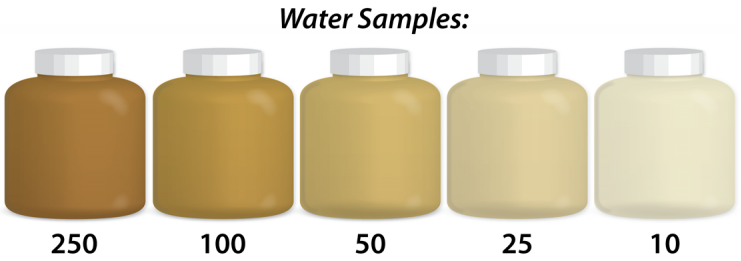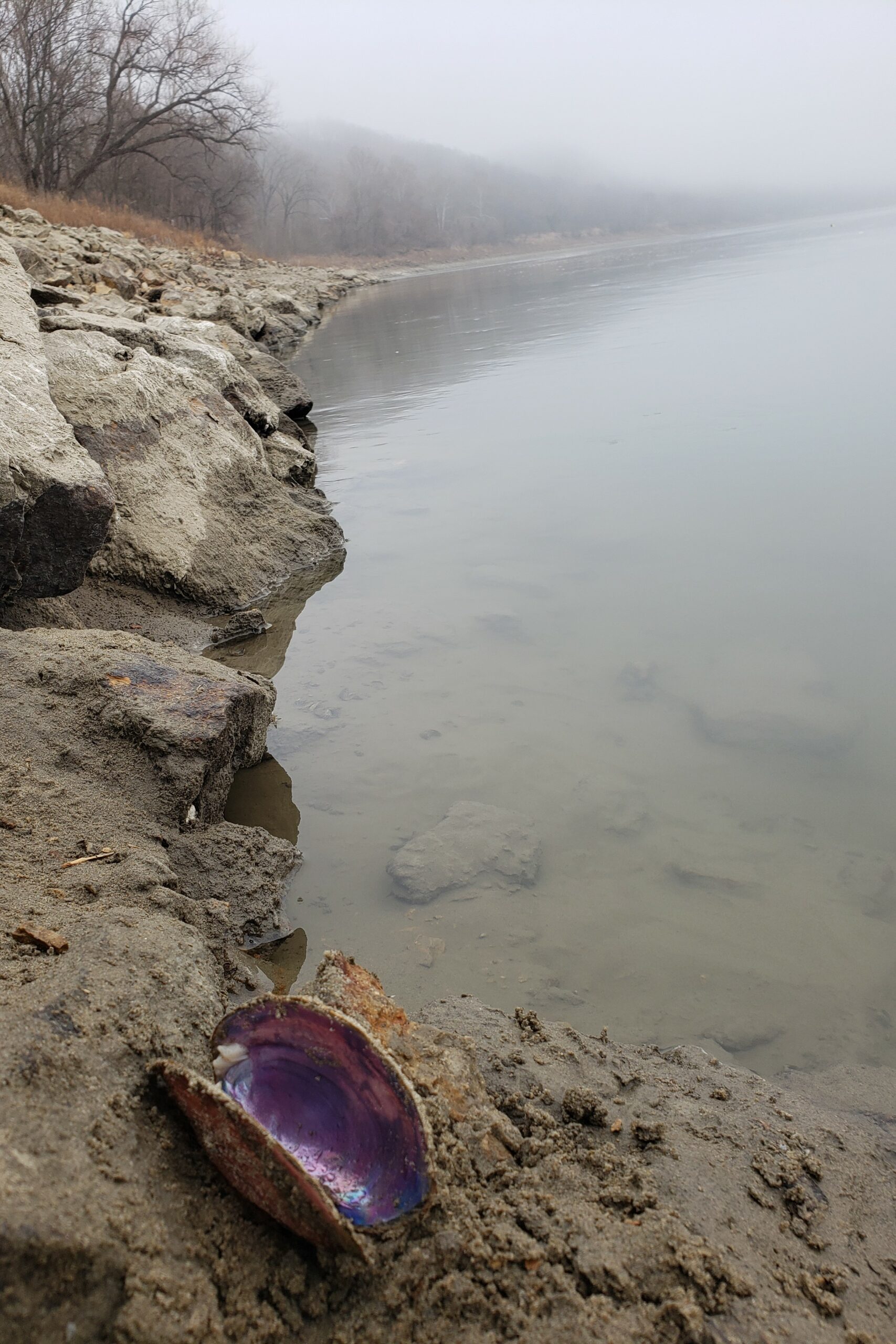
Increased turbidity can be caused by the erosion of sand and soil into the water.
Turbidity often is used as a proxy for water clarity. Technically, what turbidity measures is the intensity of light scattered by particles in the water sample at 90° incident to a light source. Particles such as clay, silt, sand, algae, plankton, microorganisms, and other matter suspended in the water scatter the passage of light through water. Particle suspension is dictated by both the size of the particle and the energy of the system.
To the naked eye, turbidity appears as cloudy or muddy water. However, it differs from the color of the water. For example, tannin-rich waters that flow through peaty areas may have a dark color, but low turbidity.
Turbidity is reported in units called Nephelometric Turbidity Units or NTUs. The Hydrolab sensor’s range is 0–3,000 NTU, but likely your measurements will be on the lower end of this range.

These illustrations are examples of turbidity standards. The numbers under the bottles range from 250 NTU to 10 NTU. The lower the number, the lower the turbidity.
Turbidity is important to measure because at certain levels (typically higher) it can impact a waterbody. For instance, high turbidity reduces the amount of sunlight passing through water from the surface. Less sunlight can reduce the rate of photosynthesis.
Suspended particles also absorb heat, so high turbidity can raise the water temperature. This, in turn, can reduce the concentration of dissolved oxygen, since warm water holds less dissolved oxygen than cold water. Suspended materials can clog fish gills and deposited sediments can smother fish eggs and aquatic insects.

Suspended materials can enter the water by natural or human-caused means, such as soil erosion of a riverbank, or urban and agricultural runoff from surrounding land. Turbidity often increases sharply during and after a rainfall since the energy of falling and flowing water is the primary way that sediment gets dislodged and carried into rivers.
Particulates also could be introduced into a waterway directly from storm or wastewater discharge pipes. In addition, biological activity can increase turbidity such as from excessive algal growth or from bottom feeders such as carp stirring up bottom sediments.

Turbidity can vary by water body, weather, and seasonal changes.
Limno Loan
c/o Illinois-Indiana Sea Grant
Purdue University
195 Marsteller Street
West Lafayette, IN 47907-2033
Phone: 765-496-6009
Email: iisg@purdue.edu
This program is administered by Illinois-Indiana Sea Grant and funded by the Great Lakes Restoration Initiative via cooperative agreement between the U.S. EPA Great Lakes National Program Office and the National Oceanic and Atmospheric Administration.
© 2023 Illinois-Indiana Sea Grant.
All Rights Reserved.
Illinois-Indiana Sea Grant strives to ensure equal access and an inclusive environment.
Designed by Studio 2D